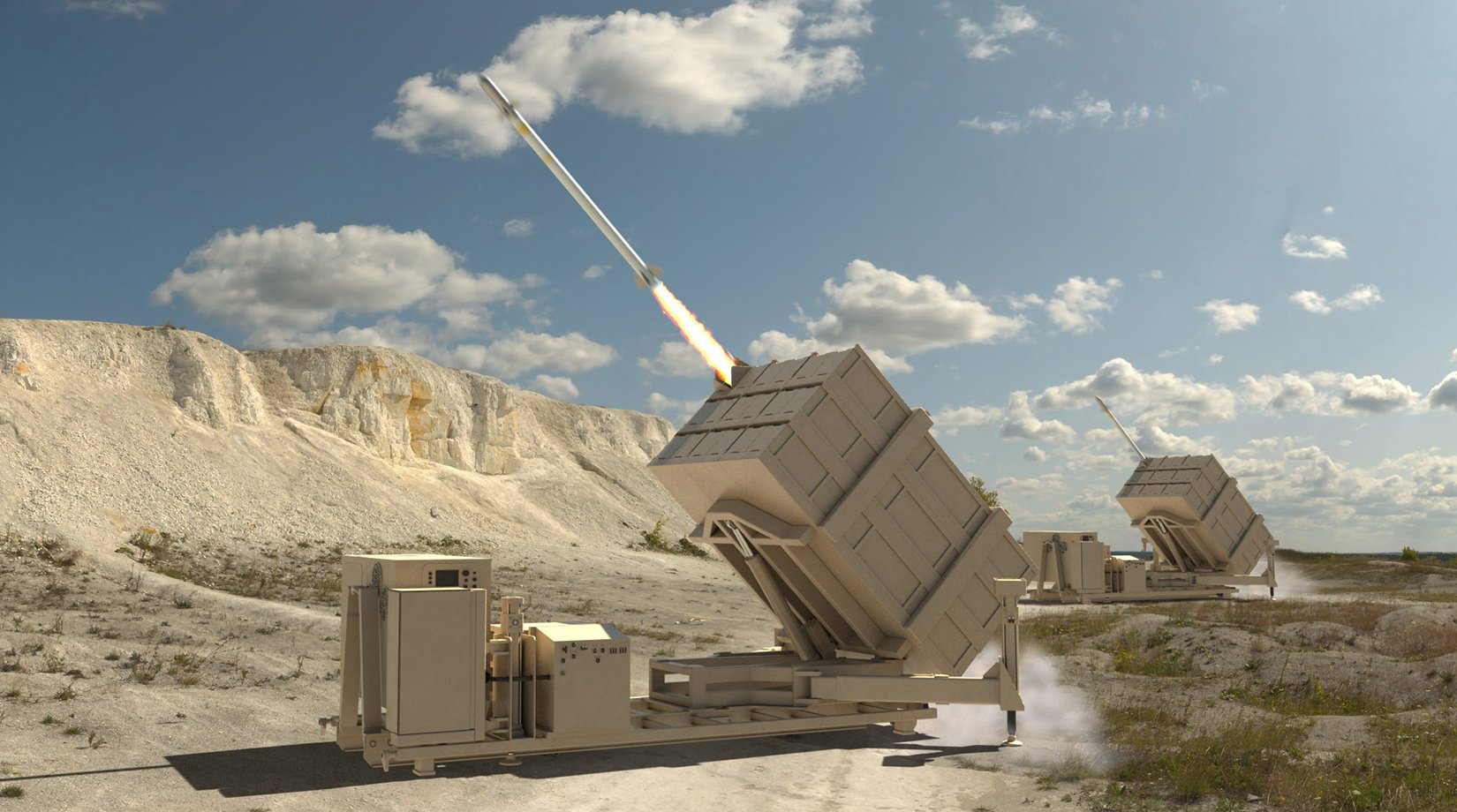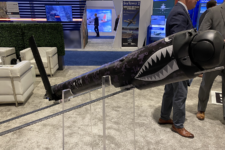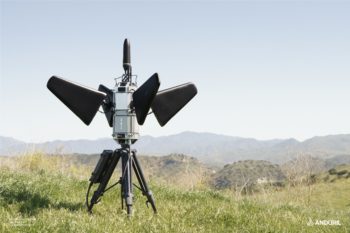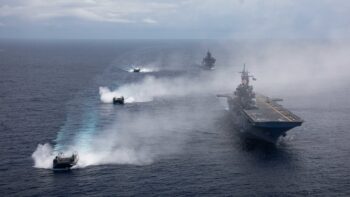
Dynetics won a prototype contract to produce the Army’s Indirect Fire Protection Capability. (Dynetics)
WASHINGTON — Ongoing supply chain woes have further delayed Leidos-owned Dynetics from delivering its first Enduring Shield air defense missile launcher prototype to the Army, a program spokesperson told Breaking Defense, but he said that so far, the delay won’t hamper the service’s larger test plan.
When the Army selected the company’s new launcher, paired with Raytheon’s ground-launched AIM-9X Sidewinder missile, for its Indirect Fire Protection Capability Increment 2 (IFPC Inc 2) program in 2021, it tasked the duo with delivering 16 launcher prototypes and 60 “fieldable” interceptor prototypes by the end of March 2024. Launcher deliveries were supposed to begin by Sept. 30, 2022 but that slipped to the end of year, before now being pushed further back, a spokesperson for the Program Executive Officer (PEO) for Missiles and Space wrote in a Sunday email to Breaking Defense.
The ongoing delay is “attributed to supply chain issues and will be mitigated by streamlining system level testing,” the spokesperson said. He did not disclose the new delivery timeline, but it should occur by the end of March so the service can begin system-level testing this quarter.
“Delivery delays will not impact the operational assessment, which aligns to the Army’s and PEO Missiles and Space’s fiscal 2023 Integrated Fires Test Campaign Plan,” the spokesperson later added. Neither Dynetics nor Leidos responded to Breaking Defense’s requests for comment Monday about the delay.
Such delivery delays are common, and Army officials said a year-and-a-half ago that the tight timeline could be a challenge when they selected the developmental Enduring Shield bid over Rafael’s battle-proven Iron Dome.
At that time, those Army officials did not detail why they selected the Enduring Shield team, but the competition did include a “shoot off” component and the two proposals were judged on three criteria in the descending order of importance: current and future capability, schedule to include technical maturity, and price. When it comes to the “capability” aspect, the Army wants the IFPC Inc 2 to first defeat cruise missiles, with the goal of adding in a counter-rocket, -artillery, and -mortar mission around 2026.
Meanwhile, the Army’s road to fielding an IFPC Inc 2 capability has been long and prone to setbacks. For example, under a previous program iteration, Dynetics was helping to design the Multi-Mission Launcher (MML) that also used the AIM-9X Sidewinder as the baseline weapon. But the service scrapped that plan between 2018 and 2019 when it unearthed “two critical issues” — one with the MML reload and refill procedures and another related to thermal issues when launching the AIM-9X Sidewinder Block II from the ground, according to an October 2018 report to Congress.
The Army then provided lawmakers with a few “interim” air defense options that included, at lawmakers’ insistence, four Iron Dome batteries. After purchasing just two of them, however, Army officials raised cybersecurity concerns about integrating the Israeli-made batteries into its larger air defense architecture, and stopped the buys there. Still, both of those batteries are now expected to be fielded at Joint Base Lewis-McChord (JBLM) in Washington, and the service spokesperson said they will be “interoperable” with the Army’s Forward Area Air Defense Command and Control (FAAD C2).
But while service officials worked through this “interim” plan, which is still evolving, they also eyed an “enduring” system and launched the competition that ultimately led to the selection of the Enduring Shield launcher with the AIM-9X missile as the all-up round magazine (AUR-M). This launcher-interceptor duo will be integrated with the Integrated Air and Missile Defense’s Battle Command System (IBCS) as the system’s fire control component and using the Sentinel radar as the sensor.
As for past thermal problems launching the AIM-9X from the ground, the Army spokesperson said it should not be a problem this time around.
“Dynetics and Raytheon have implemented AUR-M design features to mitigate thermal management risks from the ground-launched AIM-9X configuration,” he wrote in the email to Breaking Defense. “The design features have successfully completed contractor sub-system level tests and will undergo government system level tests.”
The Army spokesperson noted that the IFPC Inc 2 product office has coordinated with the Joint US Navy and Air Force office for receipt of AIM-9X missiles to support testing, as well as for receipt of missiles for the Rapid Prototype Combat Capability. If plans proceed as planned, the AIM-9X incorporated in the AUR-M will be tested during the operational assessment to gauge its “effectiveness” in the Army’s IAMD system of systems architecture.






















